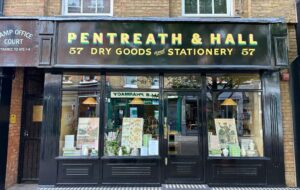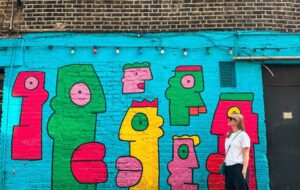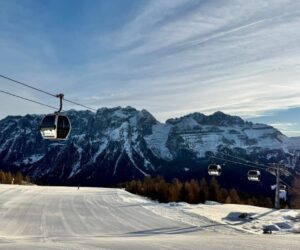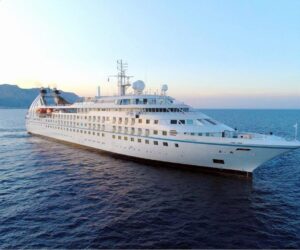10 Things to Do in Minnesota This Summer
Andrew.Parks
Tue, 04/09/2024 – 12:34
Summer in Minnesota is a special time — something locals and intrepid travelers look forward to every year. Find out where to go and stay, and what to see and do, in our guide to the perfect Minnesota summer.
What To Read Next
Twin Cities Art & Theater Weekend
Read More
Treat Yourself to a Weekend Staycation in the Twin Cities
Read More
Ice Fishing Adventures on Legendary Lake of the Woods
Read More
Get help from the experts to plan your trip
Want to know the best spots in Minnesota? How about tips on how to make the most of your time in a specific city? Our Minnesota experts can answer your questions, offer advice, or plan the perfect Minnesota trip for you. For free.
Things to Do
List
Maynard’s
6Smith
Birch’s on the Lake Brewhouse & Supperclub
Sea Salt Eatery
Angry Trout Cafe
Ernie’s on Gull Lake
Boat House
W.A. Frost & Company
Saint Paul Brewing
Cardamom
Aster Cafe
The Market at Malcolm Yards
Forager Brewery
Rustic Roots Winery
Lakeview Drive Inn
Tip Top Dairy Bar
Sebastian Joe’s Ice Cream – Linden Hills
Sebastian Joe’s Ice Cream – Lowry Hill
Nelson’s Ice Cream – Stillwater
Nelson’s Ice Cream – St. Paul
Adele’s Frozen Custard
Cup and Cone
Historic Moorhead Dairy Queen
Flapdoodles Ice Cream South
Flapdoodles Ice Cream North
Red Barn Farm of Northfield
Pleasant Grove Pizza Farm
Itasca State Park
Tettegouche State Park
Grand Portage State Park
Cascade River State Park
Judge C R Magney State Park
Jay Cooke State Park
Maplewood State Park
Split Rock Lighthouse State Park
Interstate State Park
Glendalough State Park
Minneopa State Park
Blue Mounds State Park
Lake Vermilion – Soudan Underground Mine State Park
Boundary Waters Canoe Area Wilderness
Voyageurs National Park
Afton State Park
William O’Brien State Park
Mesabi Trail
Root River State Trail
Paul Bunyan State Trail
Central Lakes State Trail
Cuyuna Country State Recreation Area
Minneapolis Sculpture Garden
Franconia Sculpture Park
Nyberg Sculpture Park
New York Mills Regional Cultural Center
Park Point Recreation Area
Phalen Regional Park
Zippel Bay State Park
Caitlin Hannah
-
Dine Outside
Outdoor dining at Birch’s on the Lake
/ Paul Vincent
Dine OutsideFrom pizza farms to lakeside patios, there are plenty of places to dine outside in Minnesota.
It’s nearly impossible to not find a park near you. Order takeout from your favorite restaurant or pack a picnic and spread out a blanket in one of our many green spaces.

Ernie’s on Gull
Ernie’s on Gull Some popular spots to dine by the water — an absolute must every summer — are Maynards, 6Smith, Birch’s on the Lake, Sea Salt Eatery, Pimento on the Lake, Angry Trout Cafe, Ernie’s on Gull, Zorbaz, and Boat House.
Other places where you’ll find a lively patio include W.A. Frost, Saint Paul Brewing, Cardamom, Aster Cafe, The Bungalow Club, Italian Eatery, The Market at Malcolm Yards, Forager Brewery, and Rustic Roots Winery.

Lake View Drive Inn
Head upstairs to the roof at Brit’s Pub, Gai Noi, Graze Provisions & Libations, LynLake Brewery, Louis Ristorante & Bar, Grandma’s Canal Park, The Scarlet Bar at the St. James Hotel, Kathy’s Pub, or Gunflint Tavern in Grand Marais.
If you would like a classic drive-in experience, visit The Drive-In in Taylor’s Falls, Minnetonka Drive In, Lakeview Drive Inn in Winona, Peppermint Twist in Delano, Tip Top Dairy Bar in Osakis, Val’s Rapid Serv in St. Cloud, and more.

A family enjoys dinner at Red Barn pizza farm
/ Paul Vincent
For something sweet, get a scoop or two at a popular ice cream shop. Some fan favorites include Sebastian Joe’s, Grand Ole Creamery , Nelson’s Ice Cream, Adele’s Frozen Custard , Cup and Cone, Moorhead Dairy Queen, Flapdoodles, Love Creamery and more.
Visit a farm for… pizza? It’s true! Minnesota is home to several popular pizza farms where you can pack your picnic blanket, utensils, beverages, and enjoy a piping hot pizza topped with the freshest ingredients around. Some popular spots are Red Barn Farm, DreamAcres , Pleasant Grove Farms, Two Pony Gardens, and more.
-
Go Camping
North Shore Camping Co
/ Paul Vincent
Go CampingSleeping under the stars, campfires, s’mores, and getaways with your friends and family are quintessential summer activities. In Minnesota, there are plenty of ways to camp in a tent, cabin, RV, or unique glamping opportunities like yurts. Find a remote spot to camp, pack your pup at these dog-friendly campsites or find a new recipe to try.
Learn more about camping in Minnesota.
-
Visit a State Park
Observe roaming bison herds at Minneopa and Blue Mounds State Parks / Roy Son
Visit a State ParkMinnesota has 65 state parks to explore, and they are scattered throughout the state. Some must-sees include the headwaters of the Mississippi River at Itasca State Park, waterfalls at Tettegouche, Grand Portage, Cascade River, Judge C.R. Magney, Nerstrand Big Woods, the swinging bridge at Jay Cooke, majestic views at Maplewood, Split Rock Lighthouse, Interstate, and more.
Other unique experiences are surrey bike rentals at Glendalough State Park, bison viewing at Minneopa or Blue Mounds, and the underground mine tours at Lake Vermilion-Soudan Underground Mine. Its popular tours are offered daily from Memorial Day through the end of September, and Fridays and Saturdays through the third weekend in October.
Accessibility wise, many state parks offer electric, all-terrain track chairs that can be used on designated trails. These chairs can help visitors explore new areas that are not suitable for regular wheelchairs.
-
Catch a Concert
WE Fest in Detroit Lakes is America’s biggest country music and camping festival
/ Keith Griner
Catch a ConcertMinnesota has some legendary music festivals in the metro area, and larger festivals throughout the state that combine music and camping for every type of fan. Lakes Jam in Brainerd and WE FEST cater to the country-rock crowd with headlining artists like Jelly Roll, Tyler Hubbard, Eric Church, and Live.
Over in Minneapolis, Basilica Block Party is back after a brief hiatus with more than 20 bands in Boom Island Park, including the Goo Goo Dolls, Counting Crows, The Fray and NEEDTOBREATHE. New this year, the Minnesota Yacht Club Festival on Harriet Island features Gwen Stefani, Alanis Morissette, Red Hot Chili Peppers, and local bands like Hippo Campus, Soul Asylum and Gully Boys.
-
Visit a Fair or Festival
Minnesota State Fair’s iconic Corn Roast stand
/ Paul Vincent
Visit a Fair or FestivalSummer is festival season in Minnesota. From iconic events like the Minnesota State Fair to memorable local events like food truck festivals, county fairs, and music festivals, there’s always something happening in the summer.
Celebrate some of your favorite foods at Kolacky Days, Rhubarb Festival, Bean Hole Days, Potato Days, Blueberry/Art Festival, Minnesota Garlic Festival, and more.
Some other can’t-miss events happening this season are Taste of Minnesota, the seven-week (!) Minnesota Renaissance Festival, Como Park Japanese Obon Festival, All Pints North, Twin Cities Jazz Festival, and more.
-
Take a Road Trip
Paul Bunyan and Babe the Blue Ox stand guard in Bemidji
/ Paul Vincent
Take a Road TripHit the highway for an epic summer road trip on one of Minnesota’s many scenic byways, including the famous Great River Road. Snag a selfie at one of Minnesota’s many memorable roadside attractions like the world’s largest otter, turkey, and many statues of our favorite lumberjack, Paul Bunyan.
Stop at a drive-in for a burger or a frozen treat or stop in one of these towns to see their charming main streets. Plan a kid-friendly road trip from Minneapolis/St. Paul to one of these spots.
-
Go Stargazing
Voyageurs National Park, International Falls
/ Erik Fremstad
Go StargazingMinnesota’s great outdoors are amazing places for stargazing. Two International Dark Sky Parks — Boundary Waters Canoe Area Wilderness and Voyageurs — offer exceptional viewing ops due to their open spaces and low light pollution.
You don’t have to travel far from the Twin Cities to see the stars at spots like Afton State Park, William O’Brien State Park, and more. The Northern Lights can also be seen at various times during the summer; here are some of the best places to see this incredible natural phenomenon in Minnesota.
-
Tackle a Bike Trail
Biking along the Prairie River
/ Mesabi Trail
Tackle a Bike TrailFrom the nation’s best urban trails in the Twin Cities to rural rail-trails through lush forest or wild prairie, Minnesota’s 4,000+ miles of paved trails are a cyclist’s dream. Many bike trails are along former railroad beds, offering secluded, scenic biking. Some of the longest paved trails include the Mesabi Trail, Root River, and the Paul Bunyan and Central Lakes state trails.
Minnesota is also home to a variety of mountain bike trails from lift-served downhill trails in Duluth, to the legendary red dirt at Cuyuna, you’ll find outstanding mountain bike trails across Minnesota.
-
Stroll Through a Sculpture Park
Nyberg Sculpture Park
/ Kvidt Creative
Stroll Through a Sculpture ParkFrom Instagram-worthy murals to epic sculpture parks, Minnesota is full of exceptional public art. The Minneapolis Sculpture Garden at Walker Art Center is arguably the most famous due to Claes Oldenburg and Coosje van Bruggen’s iconic “Spoonbridge and Cherry” structure and other interesting pieces.
Travel about one hour northeast to Franconia Sculpture Park, a 43-acre outdoor sculpture park with an active artist residency and community arts programming. In Otter Tail County, the Nyberg Sculpture Park in Vining has whimsical structures made of scrap metal like a watermelon, square knot, alien, and more. Find more of his sculptures at the nearby New York Mills Sculpture Park.
-
Live That Lake Life
Kayak the picturesque Chain of Lakes in Minneapolis
/ Paul Vincent
Live That Lake LifeSummer in Minnesota means lake time. With 11,842 to choose from, there are endless places to get out on the water. Canoe, kayak, or paddleboard on the lake or rent one with the city’s paddle share or parks programs. Plan a resort getaway, rent a houseboat or a cabin to stay near the water.
Drop a line and fish for walleye, bass, pike, panfish, and more with our guide. If you would rather relax on the beach, visit Park Point in Duluth, Detroit Lakes Public Beach, Phalen Regional Park Beach in St. Paul, Zippel Bay State Park on Lake of the Woods, and more.
Find more free things to do and check things off our bucket list.

A packed Bar Lurcat patio in the summer
/ Krivit Photography, courtesy of Meet Minneapolis





















